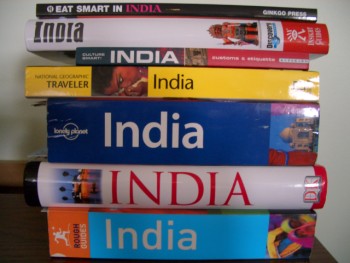
For months now, I’ve been sitting in front of my computer each day and writing about India for my next book, Wanderlust and Lipstick: For Women Traveling to India. Along with the computer, sits my cell phone and skype headset so that I can conduct interviews with women who’ve traveled to India and who are now scattered all over the world.
Music by Anoushka Shankar and VM Bhatt play in the background while I sip more cups of chai than a conductor on an overnight train in Uttar Pradesh.
Then there’s a pile of books; guides, memoirs and anthologies. All having to do with India.
What better time than now to talk about the different options in guidebooks?
It should go without saying that no matter what your destination is, you should start with a good guide book. It’s true that the Internet is fun and can provide up to date information on a given location, but you can’t curl up with your laptop at night and relax in bed while you pore over pictures, cafe recommendations and descriptions of popular sights. Well, you could, but it just isn’t the same.
If you’re as lucky as me and have a store like Wide World Books and Maps in your neighborhood, you can walk in and have your choice of dozens of options for any given country or city. If you’re not so lucky, try an independent bookstore (support the underdog!), a larger chain book store or your local library and physically check over your guidebook options.
While the below list is nowhere near complete, consider these as a starting point when you purchase that all important guide.
Beth Recommends:
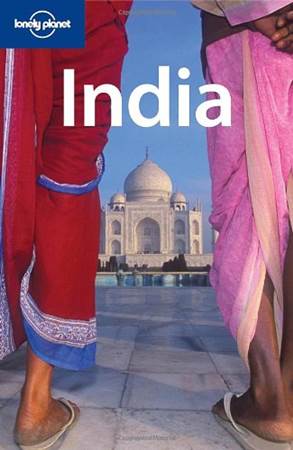
Rough Guides – I was pleasantly surprised by the amount of information in the Rough Guides. Though it doesn’t list as many options for restaurants and hotels, it does provide some excellent alternatives to the LP guide. It also includes some very informative and easy to read sidebars that include getting away and around as well as highlights for a given area.
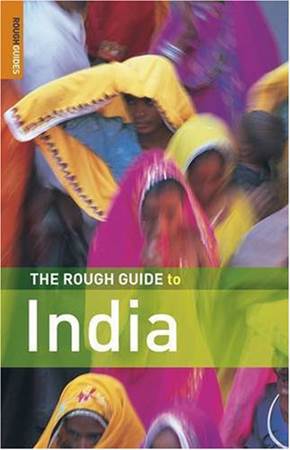
DK Eyewitness Guides – I don’t actually travel with the Eyewitness Travel Guides (though they are relatively small, they are HEAVY), but I always pick one up prior to a trip so that I can oggle over all the photos. By looking through the thousands of images in any given guide, it helps me determine what sights I want to visit. There are also brief descriptions to go along with the imagery.
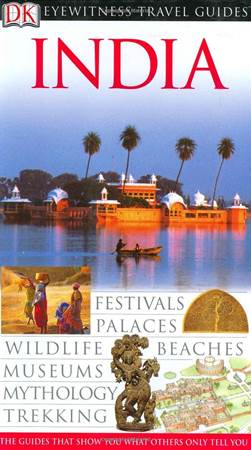
Insight Guides – This series is also filled to the brim with beautiful photos meant to draw you right in. They include a tremendous amount of cultural and historical information as well as listings of restaurants and hotels.
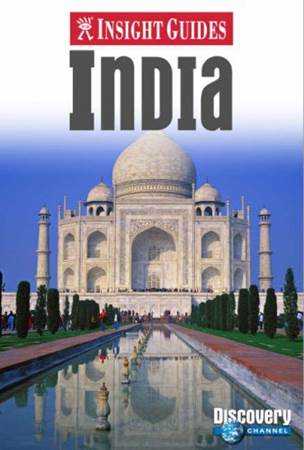
Bradt Travel Guides – What I like about this U.K.-based company is that, in addition to popular destinations, they also cover some off-the-beaten path locales and topics, like Africa Overland: 4 x 4 – Motorbike – Bicycle – Truck. The quirkier the better in my book, and I find that U.K.-based companies are usually about as quirky as you can get!
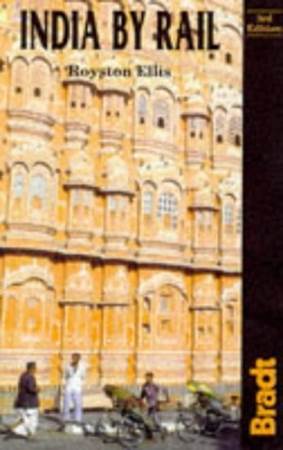
Moon Handbooks – I’ve always liked this series and, honestly, generally use them for domestic destinations. Though I’ve traveled to the Oregon Coast a couple times a year for more than 10 years, I had a lot fun bringing their guide to the area and actually finding some fabulous new restaurants as a result.
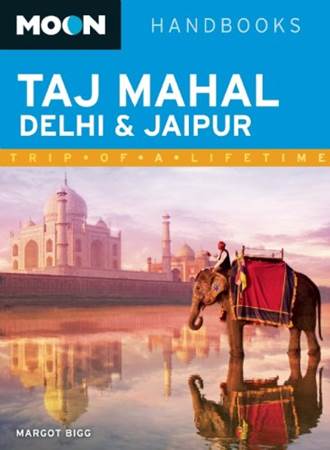
Culture Smart – I’ve always had fun reading up on cultures and their bizarre (to me!) habits of the country I’m about to visit. This series puts everything into perspective and explains why the locals do what they do.
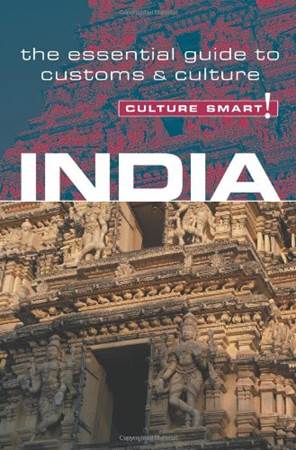
Eat Smart – Whether you’re a foodie or not, this series offers in-depth info on the local food scene with descriptions, definitions and photos. I particularly like the easy-t-read layout and the fact that they include recipes – yum!
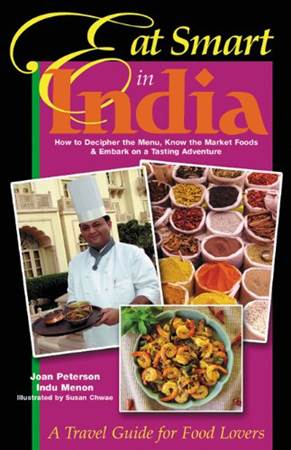
Other guides you might want to check out:
National Geographic Traveler Guides
Hopefully, these will keep you busy!
Travel Well!
Read my travel blog on at the Seattle Post Intelligencer.
Join other Wanderlusters and help make this the most popular women’s travel blog by subscribing via email or RSS feed.
You can also add this article to popular social networking sites by clicking on the buttons below.
Hi Beth. Well all that I can tell you about some of the books that you have reviewed is that Lonely Planet is in actual fact pretty useless, having dealt with many travellers who have used it and found it not very helpful, most of the info is outdated and only contains peripheral info. One of the best places for info on where to stay in any given country, what to do, where to eat, means of transport etc is a website called travellersconnected.com, the info there is up to date and also you get it direct from the horses mouth, i.e. people who are in the country already or have already travelled there.
In South Africa for example there are two great guide books called coast to coast and the alternative route which are comprehensive guides regarding every province, where to stay, what to do etc.
The other books that you have reviewed I can’t give an opinion on as I have had no real dealings with them.
Take Care
And leave only footprints but take away memories.
Chris
Great selection & once again I have to agree with your take on this. I also love the The Collected Traveler series, but of course they do not include all places. I think one of the most fun parts of travel is all the reading before going! 😉
Hey, good luck with your book, sounds interesting. Can relate with your comment on finding info on the internet “you can’t curl up with your laptop at night and relax in bed while you pore over pictures, cafe recommendations and descriptions of popular sights. Well, you could, but it just isn’t the same.” great line.
I have not explored all these guides, but have enjoyed the DK Eyewitness Guides. Thanks for the rundown on each of the others.
Travel Well!
I’ve long preferred Rough Guide over Lonely Planet , not just because of the “Lonely Planet” effect, I just prefer the style. And I LOVE the DK Eyewitness guides as pre-travel porn, they have such great pics are are so fun to look at but they’re just too heavy to lug around unless you’re doing a “city break” only trip.